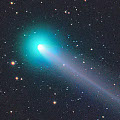
|
Now it is so bright as 4.9 mag (Dec. 4, Jakub Cerny). It will pass only 0.4 A.U. from the earth, and 0.8 A.U. from the sun in November and December, and will brighten up to 4-5 mag. In the Northern Hemisphere, it keeps observable in excellent condition for a long time until 2014 autumn when the comet will fade out. In the Southern Hemisphere, it is not be observable from mid November to early February.
Date(TT) R.A. (2000) Decl. Delta r Elong. m1 Best Time(A, h)
Dec. 14 16 34.22 30 52.3 0.732 0.829 55 4.8 2:53 (258,-42)
Dec. 21 17 1.09 26 18.6 0.873 0.812 51 5.1 2:55 (263,-40)
|
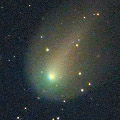
|
Although it was predicted to be 14 mag, it brightened up to 8 mag in outburst in mid October. The dust shell is getting diffuse after that, and expanding up to 50x20 arcmin (Nov. 28, Michael Jager). Now it is bright as 9.3 mag (Dec. 5, Jakub Cerny). Mitsunori Tsumura reported the comet got active again in December.It will be observable in excellent condition in 2014 spring. In the Northern Hemisphere, it will be getting higher gradually in the morning sky. In the Southern Hemisphere, it is not observable until 2014 February.
Date(TT) R.A. (2000) Decl. Delta r Elong. m1 Best Time(A, h)
Dec. 14 15 34.15 14 45.1 2.382 1.850 46 9.2 2:53 (267,-23)
Dec. 21 15 55.27 13 20.0 2.324 1.805 47 9.4 2:55 (268,-20)
|

|
It was expected to be a great comet as it approached to the sun down to only 0.01 A.U. on Nov. 28. It brightened up to -2.5 mag at best. However, the comet's nucleus disrupted at the perihelion passage. After that, the dust remnant had been visible until Dec. 6 on the STEREO spacecraft images. However, the dust remnant has not been detected by CCD observations on the ground. The nucleus is not detected, fainter than 18 mag (Dec. 13, Lorenzo Comolli). But visual observers reported it was visible at 7.5 mag on Dec. 6 (Piotr Guzik), 7.2 mag on Dec. 7 (Juan Jose Gonzalez), and 9.6 mag on Dec. 9 (Jakub Cerny). It approaches to the earth down to 0.4 A.U. from mid December to early January. It will be observable in excellent condition in the Northern Hemisphere, but it is extremely hard to catch the comet. It is not observable in the Southern Hemisphere.
Date(TT) R.A. (2000) Decl. Delta r Elong. m1 Best Time(A, h)
Dec. 14 16 10.57 12 11.6 0.549 0.663 39 9.4 2:53 (276,-29)
Dec. 21 16 14.07 32 1.2 0.457 0.857 60 10.1 2:55 (252,-33)
|
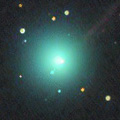
|
It brightened rapidly as expected. It passed the perihelion on Nov. 21, and brightened up to 7.8 mag (Nov. 18, Todd Augustyniak). It will never be observable after this.
Date(TT) R.A. (2000) Decl. Delta r Elong. m1 Best Time(A, h)
Dec. 14 17 9.84 -27 34.4 1.620 0.648 5 10.4 2:53 (317,-12)
Dec. 21 17 47.94 -28 17.0 1.750 0.776 5 11.8 2:55 (319,-13)
|

|
New bright comet. It brightened very rapidly after discovered on Nov. 6 at 15 mag. Now it is bright as 10.0 mag but diffuse (Dec. 6, Jakub Cerny). It seems to keep 10-11 mag for a while after this. It is observable in excellent condition in the Northern Hemisphere. It locates somewhat low in the Southern Hemisphere.
Date(TT) R.A. (2000) Decl. Delta r Elong. m1 Best Time(A, h)
Dec. 14 10 34.90 23 49.8 0.867 1.518 109 10.5 2:53 (213, 24)
Dec. 21 10 49.09 27 50.2 0.864 1.558 114 10.6 2:55 (208, 22)
|
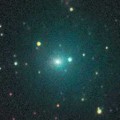
|
It brightened very rapidly. Now it is so bright as 10.6 mag (Dec. 4, Jakub Cerny). It keeps bright as 10 mag from autumn to winter. In the Northern Hemipshere, it keeps observable in excellent condition until the comet fades out. In the Southern Hemisphere, it keeps observable in good condition within 2013, but it will not be observable in 2014.
Date(TT) R.A. (2000) Decl. Delta r Elong. m1 Best Time(A, h)
Dec. 14 23 6.42 13 18.3 1.254 1.608 91 10.8 20:55 (126, 22)
Dec. 21 23 21.38 15 22.8 1.303 1.611 88 10.9 21:00 (125, 18)
|
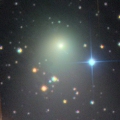
|
It became much brighter than expected, and reached up to 8.5 mag (Aug. 15, Alexandre Amorim). Now it is fading, but it is bright as 11.6 mag still now (Dec. 7, Chris Wyatt). In the Southern Hemisphere, it will keep observable in good condition for a long time until 2014 summer when the comet fades out. It will never be observable again in the Northern Hemisphere.
Date(TT) R.A. (2000) Decl. Delta r Elong. m1 Best Time(A, h)
Dec. 14 14 8.43 -62 51.5 2.661 2.185 51 12.5 2:53 (327, 32)
Dec. 21 14 33.46 -63 59.9 2.717 2.252 52 12.8 2:55 (329, 33)
|

|
First return of a new periodic comet discovered in 1998. It brightened up to 10 mag at the discovery. Now it is 12.7 mag (Dec. 4, Juan Jose Gonzalez). A bit fainter than originally expected. But in the Northern Hemisphere, it keeps observable in excellent condition from autumn to spring. It locates somewhat low in the Southern Hemisphere.
Date(TT) R.A. (2000) Decl. Delta r Elong. m1 Best Time(A, h)
Dec. 14 6 46.47 40 26.5 1.377 2.309 155 12.8 1:17 (180, 15)
Dec. 21 6 41.04 39 41.3 1.334 2.287 161 12.6 0:44 (180, 15)
|

|
Now it is bright as 13.6 mag (Dec. 11, Hidetaka Sato). It is expected to brighten up to 5-6 mag in 2014 autumn. In the Northern Hemisphere, it will be getting higher gradually after this, and it keeps observable in good condition for a long time. In the Southern Hemisphere, it will not be observable until 2014 February.
Date(TT) R.A. (2000) Decl. Delta r Elong. m1 Best Time(A, h)
Dec. 14 16 10.32 10 7.7 4.402 3.676 38 12.9 2:53 (277,-28)
Dec. 21 16 14.30 10 14.6 4.273 3.601 41 12.7 2:55 (273,-22)
|

|
Now it is 12.8 mag and visible visually (Dec. 5, Juan Jose Gonzalez). It keeps 13-14 mag and observable in good condition in the Northern Hemisphere for a long time from 2013 to 2014. In the Southern Hemisphere, it is not observable until 2014 autumn.
Date(TT) R.A. (2000) Decl. Delta r Elong. m1 Best Time(A, h)
Dec. 14 17 29.88 84 19.9 3.018 3.445 107 13.6 20:55 (175,-39)
Dec. 21 19 51.35 82 59.9 3.021 3.444 107 13.6 21:00 (171,-37)
|

|
It approached to the sun down to 0.73 A.U. on Mar. 24, and brightened up to 4.7 mag (Mar. 11, Michael Mattiazzo). Now it is fading. It has already faded down to 14.0 mag (Nov. 27, Sandor Szabo). In the Northern Hemisphere, it keeps observable in good condition while fading gradually. In the Southern Hemisphere, it will never be observable again.
Date(TT) R.A. (2000) Decl. Delta r Elong. m1 Best Time(A, h)
Dec. 14 19 33.00 48 37.8 4.024 3.927 77 13.9 20:55 (129,-34)
Dec. 21 19 40.92 48 37.1 4.131 4.004 75 14.0 21:00 (128,-38)
|

|
Now it is 12.9 mag (Nov. 27, Sandor Szabo). It keeps bright at 13-14 mag for a long time until 2014. It keeps observable for a long time in the Northern Hemisphere, although it becomes unobservable temporarily in January. In the Southern Hemisphere, it keeps unobservable until March.
Date(TT) R.A. (2000) Decl. Delta r Elong. m1 Best Time(A, h)
Dec. 14 19 26.18 7 29.4 6.767 6.080 42 13.9 20:55 ( 87,-17)
Dec. 21 19 28.77 6 55.4 6.838 6.092 37 13.9 21:00 ( 82,-23)
|

|
It brightened up to 11-12 mag in 2012. Now it is 14.8 mag (Dec. 10, Hidetaka Sato). It will be observable in good condition at 14 mag until 2014 early summer.
Date(TT) R.A. (2000) Decl. Delta r Elong. m1 Best Time(A, h)
Dec. 14 13 30.25 -14 7.3 7.320 6.818 55 14.0 2:53 (274, 19)
Dec. 21 13 30.09 -14 17.4 7.240 6.851 63 13.9 2:55 (270, 25)
|

|
Appearing in the morning sky. It looks somewhat diffuse by Jean-Francois Soulier's image on Dec. 13.
Date(TT) R.A. (2000) Decl. Delta r Elong. m1 Best Time(A, h)
Dec. 14 15 15.65 -26 35.0 7.016 6.177 29 14.2 2:53 (299, 5)
Dec. 21 15 20.96 -26 58.1 6.955 6.176 35 14.1 2:55 (296, 10)
|
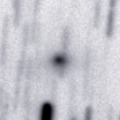
|
It brightened up to 2 mag by unusual major outburst in 2007. It will return in 2014. It will be 14 mag at best by normal prediction. But actually, it is already very bright as 13.5 mag (Nov. 25, Hidetaka Sato). It will be unobservable soon, and keeps unobservable until May.
Date(TT) R.A. (2000) Decl. Delta r Elong. m1 Best Time(A, h)
Dec. 14 20 1.58 -24 13.2 2.931 2.208 35 14.4 20:55 ( 67, 9)
Dec. 21 20 16.26 -22 49.9 2.959 2.189 32 14.3 21:00 ( 65, 5)
|
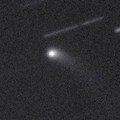
|
Now it is 14.1 mag and visible visually (Nov. 27, Sandor Szabo). It keeps 14 mag for a long time until 2014 summer. It keeps observable in good condition in the Northern Hemisphere. It is observable only until February in the Southern Hemisphere.
Date(TT) R.A. (2000) Decl. Delta r Elong. m1 Best Time(A, h)
Dec. 14 3 48.48 -5 52.9 1.485 2.344 142 14.6 22:14 (180, 61)
Dec. 21 3 34.04 -2 49.7 1.468 2.285 136 14.4 21:32 (180, 58)
|

|
Now it is 15.2 mag (Nov. 23, K. Hills). It is expected to brighten up to 7.5 mag and to be observable in excellent condition from summer to autumn in 2014 in the Southern Hemisphere. The condition is bad in the Northern Hemisphere. It will pass extremely close to Mars in 2014 October.
Date(TT) R.A. (2000) Decl. Delta r Elong. m1 Best Time(A, h)
Dec. 14 4 0.68 -39 18.1 3.642 4.147 114 14.7 22:26 ( 0, 86)
Dec. 21 3 47.90 -39 21.9 3.630 4.079 110 14.6 21:46 ( 0, 86)
|

|
Big asteroid discovered in 1906. It suddenly showed the cometary activity on Dec. 11, 2010, probably due to an impact of a small object. It has already turned to be stellar.
Date(TT) R.A. (2000) Decl. Delta r Elong. m1 Best Time(A, h)
Dec. 14 0 13.21 -12 50.8 2.924 3.177 95 14.7 20:55 (118, 52)
Dec. 21 0 16.34 -11 49.8 3.032 3.186 89 14.8 21:00 (112, 46)
|

|
Now it is 14.6 mag (Nov. 22, Toshiyuki Takahashi). It will be fading slowly until May when it becomes fainter than 18 mag. It keeps observable in good condition in the Southern Hemisphere. It keeps locating extremely low in the Northern Hemisphere.
Date(TT) R.A. (2000) Decl. Delta r Elong. m1 Best Time(A, h)
Dec. 14 12 58.90 -28 47.5 2.376 2.056 59 14.8 2:53 (285, 32)
Dec. 21 13 6.66 -31 30.9 2.379 2.131 63 15.0 2:55 (285, 38)
|
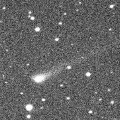
|
It keeps bright as 13-14 mag for a long time from 2013 to 2014. Now it is not observable. But it will appear in the morning sky again in 2014 February.
Date(TT) R.A. (2000) Decl. Delta r Elong. m1 Best Time(A, h)
Dec. 14 17 18.56 -25 31.3 4.081 3.098 2 14.9 2:53 (318,-15)
Dec. 21 17 30.82 -25 50.6 4.069 3.093 6 14.9 2:55 (315,-13)
|
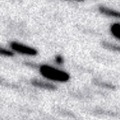
|
It reaches up to 12 mag in 2014 spring. But the condition in this apparition is bad. It locates low around the brightest days. Now it is 15.4 mag (Nov. 24, A. Klotz, F. Kugel, J. Nicolas). It keeps observable in good condition until winter when the comet will brighten up to 15-16 mag.
Date(TT) R.A. (2000) Decl. Delta r Elong. m1 Best Time(A, h)
Dec. 14 20 42.13 -12 20.1 2.829 2.289 47 15.3 20:55 ( 82, 10)
Dec. 21 20 54.75 -11 48.4 2.850 2.248 43 15.2 21:00 ( 80, 6)
|
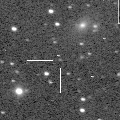
|
Now it is 16.7 mag (Dec. 2, Hidetaka Sato). It is expected to brighten up to 13 mag and to be observable in excellent condition from spring to summer in 2014.
Date(TT) R.A. (2000) Decl. Delta r Elong. m1 Best Time(A, h)
Dec. 14 12 52.25 -7 28.9 3.110 2.873 67 15.4 2:53 (263, 23)
Dec. 21 13 1.47 -8 22.1 3.000 2.849 71 15.3 2:55 (261, 28)
|

|
It brightened up to 14.0 mag from spring to summer (June 11, Sandor Szabo). Now it is 15.0 mag, much brighter than origianlly predicted (Dec. 11, Hidetaka Sato). In the Northern Hemisphere, it will be observable at 15-16 mag in excellent condition until spring. It locates somewhat low in the Southern Hemisphere.
Date(TT) R.A. (2000) Decl. Delta r Elong. m1 Best Time(A, h)
Dec. 14 13 49.40 3 4.3 4.280 3.861 58 15.5 2:53 (263, 5)
Dec. 21 13 50.91 4 9.1 4.193 3.893 65 15.5 2:55 (258, 10)
|
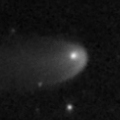
|
Now it is 15.5 mag (Nov. 18, Yasukazu Ikari). It keeps 15 mag and observable in good condition in 2013. It locates somewhat low in the Northern Hemisphere.
Date(TT) R.A. (2000) Decl. Delta r Elong. m1 Best Time(A, h)
Dec. 14 3 19.11 -23 32.8 6.864 7.461 124 15.6 21:46 (180, 78)
Dec. 21 3 15.58 -22 52.3 6.961 7.494 119 15.6 21:15 (180, 78)
|
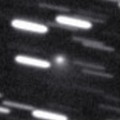
|
Now it is 15.6 mag (Dec. 3, Yasukazu Ikari). It will brighten rapidly and will be observable at 15 mag in winter in excellent condition in the Northern Hemisphere. It locates low in the Southern Hemisphere.
Date(TT) R.A. (2000) Decl. Delta r Elong. m1 Best Time(A, h)
Dec. 14 4 15.44 41 35.2 0.995 1.938 156 15.7 22:42 (180, 13)
Dec. 21 4 10.26 41 2.5 0.989 1.913 151 15.6 22:09 (180, 14)
|
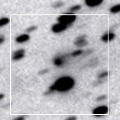
|
Now it is 16.0 mag (Dec. 5, P. Bacci, L. Tesi, G. Fagioli). It tends to be brightest 4 months after the perihelion passage. It will reach up to 15.5 mag from autumn to winter, and will be observable in excellent condition.
Date(TT) R.A. (2000) Decl. Delta r Elong. m1 Best Time(A, h)
Dec. 14 6 26.22 18 20.7 1.251 2.216 164 15.7 0:57 (180, 37)
Dec. 21 6 19.71 18 53.2 1.269 2.248 172 15.7 0:23 (180, 36)
|
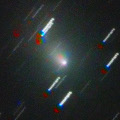
|
It brightened up to 9-10 mag in 2013 spring. Now it is fading. It has already faded down to 15.8 mag (Oct. 7, Hidetaka Sato). In the Southern Hemisphere, it keeps observable for a long time until the comet fades out, although it keeps locating low. It will never be observable again in the Northern Hemisphere.
Date(TT) R.A. (2000) Decl. Delta r Elong. m1 Best Time(A, h)
Dec. 14 15 20.71 -64 35.1 3.770 3.168 46 16.1 2:53 (333, 26)
Dec. 21 15 40.41 -65 3.6 3.826 3.237 47 16.3 2:55 (333, 27)
|

|
It brightened up to 12-13 mag from autumn to winter in 2012. Now it is fading. It has already faded down to 16.3 mag (Nov. 24, J. Gonzalez). It keeps observable for a long time until March when the comet becomes fainter than 18 mag.
Date(TT) R.A. (2000) Decl. Delta r Elong. m1 Best Time(A, h)
Dec. 14 5 54.20 -1 15.0 3.774 4.682 154 16.6 0:25 (180, 56)
Dec. 21 5 50.25 -1 41.4 3.818 4.727 154 16.7 23:49 (180, 57)
|
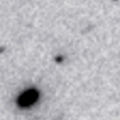
|
It is expected to brighten up to 13 mag and to be observable in good condition in 2015. Now it is 16.7 mag (Dec. 11, Hidetaka Sato). In 2014, it will be observable at 15 mag in good condition from winter to summer.
Date(TT) R.A. (2000) Decl. Delta r Elong. m1 Best Time(A, h)
Dec. 14 13 31.56 -4 1.3 5.888 5.454 59 16.7 2:53 (266, 13)
Dec. 21 13 36.26 -4 17.0 5.746 5.410 65 16.6 2:55 (262, 18)
|

|
Now it is 16.8 mag (Nov. 6, G. Borisov, O. Bryzgalov). It keeps 16 mag for a long time until 2015 summer. It keeps observable in good condition in the Northern Hemisphere. It becomes observable only after 2015 in the Southern Hemisphere.
Date(TT) R.A. (2000) Decl. Delta r Elong. m1 Best Time(A, h)
Dec. 14 5 11.95 52 23.9 3.567 4.452 150 16.7 23:38 (180, 3)
Dec. 21 5 5.13 52 52.8 3.542 4.415 149 16.7 23:04 (180, 2)
|
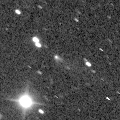
|
Now it is 17.5 mag (Nov. 22, K. Hills). It keeps 17 mag for a long time from 2013 summer to early 2015.
Date(TT) R.A. (2000) Decl. Delta r Elong. m1 Best Time(A, h)
Dec. 14 1 37.88 12 49.4 2.406 3.082 125 16.7 20:55 (164, 41)
Dec. 21 1 38.97 12 40.6 2.483 3.075 118 16.8 21:00 (154, 38)
|
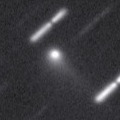
|
Brightened rapidly. Now it is visible visually at 15.6 mag (Nov. 27, Sandor Szabo). It will fade out rapidly after this, and will be fainter than 18 mag in January.
Date(TT) R.A. (2000) Decl. Delta r Elong. m1 Best Time(A, h)
Dec. 14 22 37.48 8 22.8 2.314 2.394 82 17.0 20:55 (117, 21)
Dec. 21 22 48.81 9 6.6 2.419 2.423 78 17.2 21:00 (114, 16)
|
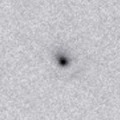
|
Now it is 17.5 mag (Nov. 24, Y. Sugiyama). Brighter than origianlly predicted. It will be observable at 12-13 mag in excellent condition from 2014 summer to 2015 spring. In the Southern Hemisphere, it will locate low around the highlight.
Date(TT) R.A. (2000) Decl. Delta r Elong. m1 Best Time(A, h)
Dec. 14 0 13.51 -6 12.4 2.918 3.216 98 17.2 20:55 (125, 48)
Dec. 21 0 15.74 -5 31.3 2.983 3.178 92 17.2 21:00 (118, 42)
|
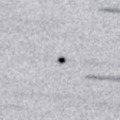
|
It approached to the sun down to 0.14 A.U. on Oct. 7. In the Northern Hemisphere, it keeps observable at 16 mag in good condition from late October to mid December. In the Southern Hemisphere, it locates very low from November to December.
Date(TT) R.A. (2000) Decl. Delta r Elong. m1 Best Time(A, h)
Dec. 14 22 7.70 12 29.6 1.232 1.405 77 17.2 20:55 (115, 13)
Dec. 21 22 29.59 13 1.3 1.376 1.487 76 17.4 21:00 (114, 10)
|
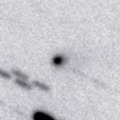
|
First return of a new periodic comet discovered in 1998. Now it is 16.3 mag (Nov. 23, Y. Sugiyama). It is fainter than originally expected by 1-2 mag. It was expected to be observable at 15 mag in good condition from 2013 autumn to early 2014. But actually, it will be 17 mag at best.
Date(TT) R.A. (2000) Decl. Delta r Elong. m1 Best Time(A, h)
Dec. 14 1 35.95 -17 48.5 2.041 2.560 110 17.2 20:55 (143, 69)
Dec. 21 1 37.87 -15 55.2 2.103 2.551 105 17.2 21:00 (131, 63)
|
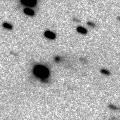
|
Now it is 16.5 mag (Nov. 22, Y. Sugiyama). It will be observable at 17 mag in excellent condition from autumn to winter.
Date(TT) R.A. (2000) Decl. Delta r Elong. m1 Best Time(A, h)
Dec. 14 2 40.80 16 20.0 1.752 2.591 140 17.3 21:08 (180, 39)
Dec. 21 2 40.77 16 0.0 1.812 2.591 133 17.4 21:00 (174, 39)
|
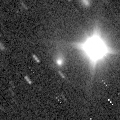
|
It was observed at 15-16 mag in 2012. Now it is fading slowly. But it keeps 16.8 mag still now (Nov. 24, Y. Sugiyama). It will be fainter than 18 mag in January. It locates low in the Southern Hemisphere.
Date(TT) R.A. (2000) Decl. Delta r Elong. m1 Best Time(A, h)
Dec. 14 0 10.93 13 1.1 4.663 5.017 105 17.3 20:55 (140, 32)
Dec. 21 0 10.06 11 56.6 4.828 5.058 97 17.4 21:00 (131, 28)
|
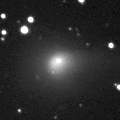
|
Fading slowly. It is bright as 16.3 mag still now (Nov. 24, Y. Sugiyama). It keeps observable in good condition until the comet will be fainter than 18 mag in January.
Date(TT) R.A. (2000) Decl. Delta r Elong. m1 Best Time(A, h)
Dec. 14 0 39.40 -4 53.5 3.407 3.783 104 17.3 20:55 (134, 51)
Dec. 21 0 41.88 -4 40.1 3.580 3.852 98 17.5 21:00 (125, 46)
|
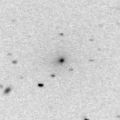
|
It brightened rapidly, and it keeps bright as 15.9 mag still now (Nov. 25, A. Maury, J.-F Soulier, J. G Bosch). It will be fading after this. But it may keep 16 mag some more time. It will be getting higher gradually in the Southern Hemisphere. But it keeps locating extremely low in the Northern Hemisphere.
Date(TT) R.A. (2000) Decl. Delta r Elong. m1 Best Time(A, h)
Dec. 14 9 11.36 -52 31.4 2.449 2.635 89 17.5 2:53 (337, 70)
Dec. 21 8 42.94 -53 42.7 2.417 2.685 94 17.8 2:46 ( 0, 71)
|
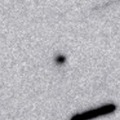
|
Now it is 17.5 mag (Dec. 7, Catalina Sky Survey). It keeps 15-16 mag for a long time from 2015 to 2016. In this winter, it is observable at 17.5 mag until March.
Date(TT) R.A. (2000) Decl. Delta r Elong. m1 Best Time(A, h)
Dec. 14 3 3.57 -6 34.5 6.382 7.106 134 17.5 21:30 (180, 61)
Dec. 21 3 0.41 -6 3.8 6.424 7.072 127 17.5 21:00 (180, 61)
|

|
Now it is 17.8 mag (Dec. 1, J. De Queiroz, R. Behrend). It keeps close to the earth around 0.7 a.u. until spring. It will brighten up to 16.5 mag in February and March, and will be observable in excellent condition in the Northern Hemisphere. It locates very low in the Southern Hemisphere.
Date(TT) R.A. (2000) Decl. Delta r Elong. m1 Best Time(A, h)
Dec. 14 0 26.66 18 35.5 0.722 1.414 110 17.8 20:55 (147, 29)
Dec. 21 0 30.00 19 24.4 0.721 1.362 105 17.6 21:00 (141, 25)
|
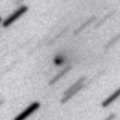
|
Now it is 17.6 mag (Nov. 24, G. Hug). It keeps observable at 17.5 mag in good condition from autumn to winter.
Date(TT) R.A. (2000) Decl. Delta r Elong. m1 Best Time(A, h)
Dec. 14 7 23.33 20 12.2 1.350 2.268 152 17.7 1:54 (180, 35)
Dec. 21 7 18.10 21 4.4 1.345 2.297 160 17.8 1:21 (180, 34)
|
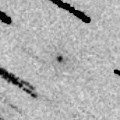
|
Although it had been fainter than expected, it is brightening now. Probably it tends to be brightest after the perihelion passage. Now it is 18.0 mag (Nov. 23, R. Naves, M. Campas). It keeps observable at 17-18 mag until December. It locates somewhat low in the Southern Hemisphere.
Date(TT) R.A. (2000) Decl. Delta r Elong. m1 Best Time(A, h)
Dec. 14 4 32.77 23 3.4 1.050 2.023 167 17.7 22:59 (180, 32)
Dec. 21 4 27.50 22 42.5 1.121 2.072 159 18.0 22:26 (180, 32)
|
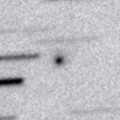
|
Now it is 17.6 mag (Dec. 7, J. F. Hernandez). It is expected to brighten up to 6 mag in 2014 autumn. At this time, it keeps observable while brightening gradually until April when it becomes 16 mag.
Date(TT) R.A. (2000) Decl. Delta r Elong. m1 Best Time(A, h)
Dec. 14 7 0.93 22 56.8 3.333 4.261 157 17.9 1:32 (180, 32)
Dec. 21 6 50.19 22 56.9 3.219 4.185 167 17.8 0:54 (180, 32)
|
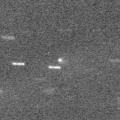
|
Now it is 19.1 mag (Nov. 11, Hidetaka Sato). In this winter, it is observable at 17.5 mag in good condition until March.
Date(TT) R.A. (2000) Decl. Delta r Elong. m1 Best Time(A, h)
Dec. 14 10 47.44 11 5.0 2.008 2.425 102 17.9 2:53 (223, 33)
Dec. 21 10 52.03 10 39.2 1.937 2.438 108 17.8 2:55 (217, 36)
|

|
Now it is 18.9 mag (Dec. 4, H. Denzau). It will brighten up to 14 mag around the perihelion passage in 2019. In 2013, it will be observable in good condition at 18 mag from summer to winter. It locates low in the Southern Hemisphere.
Date(TT) R.A. (2000) Decl. Delta r Elong. m1 Best Time(A, h)
Dec. 14 2 47.10 27 6.4 12.809 13.620 144 17.9 21:14 (180, 28)
Dec. 21 2 45.55 27 4.4 12.855 13.591 137 17.9 21:00 (176, 28)
|

|
Now it is 18.6 mag (Nov. 24, A. Maury, J.-F Soulier, J. G Bosch). It keeps 18-19 mag for a long time until 2015. It is observable at 18 mag in good condition in this winter.
Date(TT) R.A. (2000) Decl. Delta r Elong. m1 Best Time(A, h)
Dec. 14 6 11.05 10 57.0 6.654 7.603 163 17.9 0:42 (180, 44)
Dec. 21 6 5.63 10 29.4 6.642 7.603 166 17.9 0:09 (180, 44)
|
|
![]()
 178P/Hug-Bell
178P/Hug-Bell 184P/Lovas 2
184P/Lovas 2 C/2013 V5 ( Oukaimeden )
C/2013 V5 ( Oukaimeden ) 266P/2012 P1 ( Christensen )
266P/2012 P1 ( Christensen ) C/2010 U3 ( Boattini )
C/2010 U3 ( Boattini ) C/2012 A1 ( PanSTARRS )
C/2012 A1 ( PanSTARRS )![]()













































